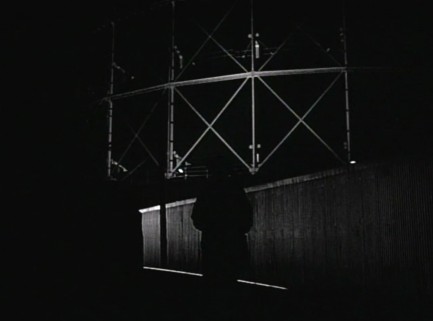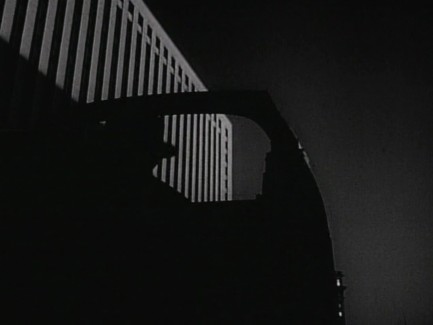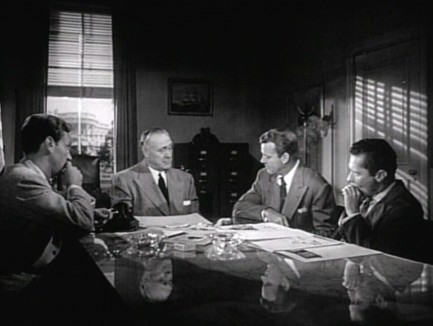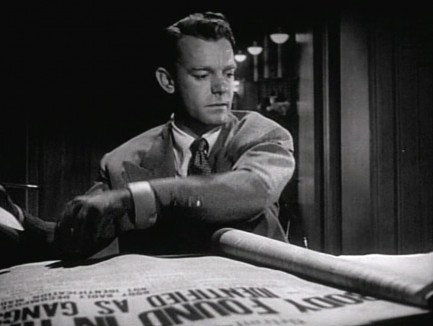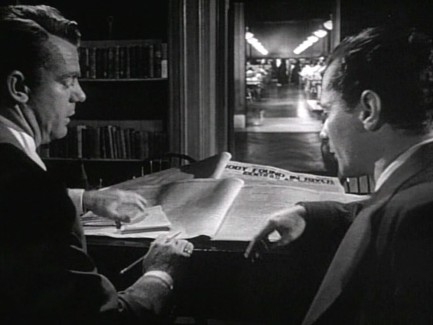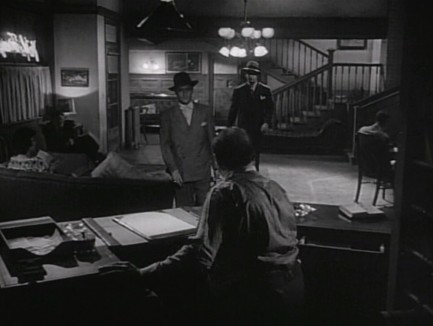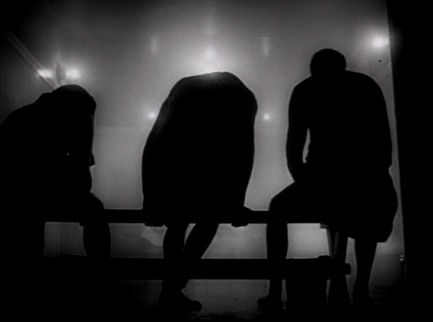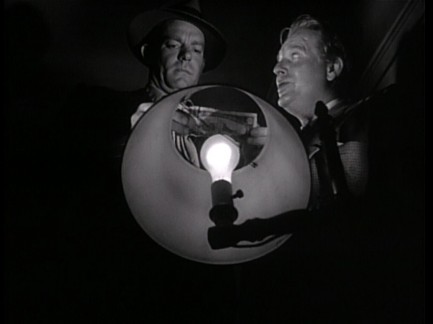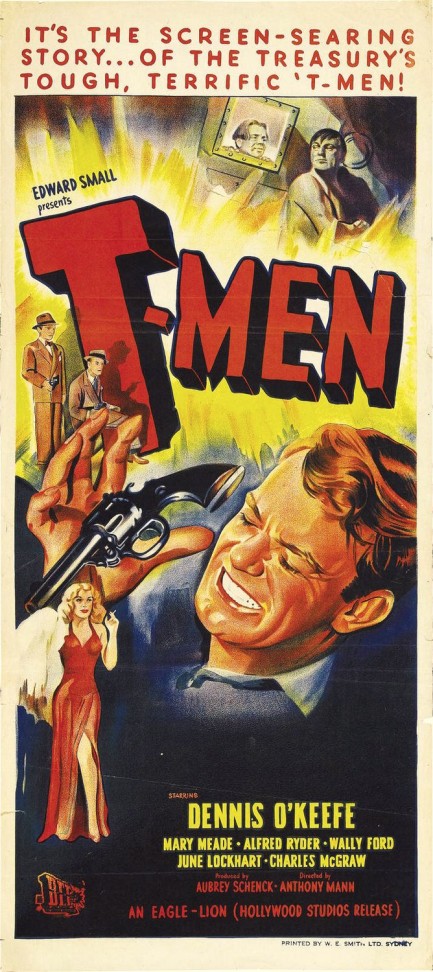| Vintage Pulp | Apr 24 2022 |

When you cross the line trouble is sure to follow.
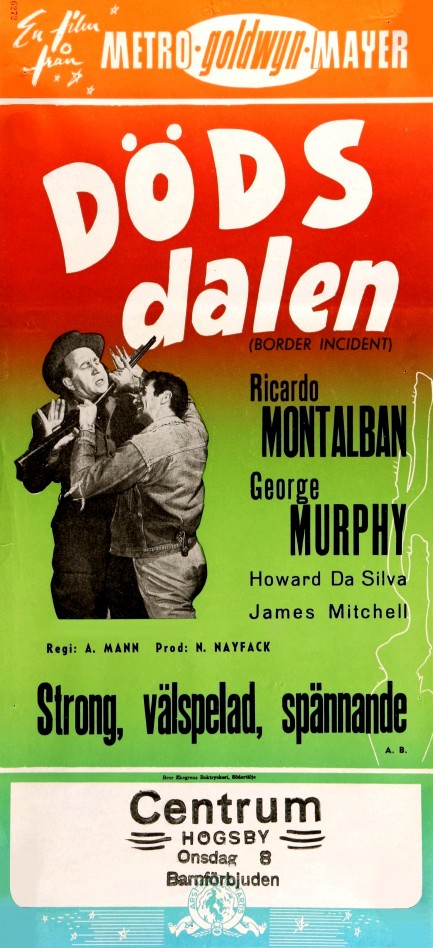
This bright poster for Dödsdalen was made for the Swedish run of the U.S. drama Border Incident, an interesting vintage film about illegal immigration—a hot button issue everywhere these days. Ricardo Montalbán stars as a Mexican investigator named Pablo Rodriquez who goes undercover as a migrant worker and crosses the border illegally to try and get to the bottom of why and by whom migrants are being exploited and sometimes murdered. He gets support from U.S. immigration cop George Murphy, who's equally eager to apprehend the evildoers.
We were curious what sort of treatment migrants would get in the screenplay, and it was generally compassionate. The years we lived in Guatemala we became acquainted with some locals and learned quickly that the vast majority of those who left for the States didn't want to go. Well, we didn't learn it—we already knew it because it's a no-brainer. Leave their families, wives, children, culture, social networks, and all sense of security? Of course they don't want to do it. But for the most part it's go north or go hungry. If that kind of dilemma isn't worthy of a person's compassion, we don't know what is.
Montalbán brings authenticity and passion to his performance. You may remember we thought he should have starred in Touch of Evil instead of Charlton Heston. His character comes under suspicion immediately—his hands are too soft to belong to a migrant. Murphy, working undercover from the other end, also gets into hot water, but survives a beating and torture to get next to the crooks. They're from the U.S., which of course is plausible. No industry as profitable as human trafficking is controlled from only one side of a border. Americans make money on it and always have. These particular Americans will kill to keep the profits coming in, which means Montalbán and Murphy have their hands full.
Border Incident scores well in mood, tension, and seriousness, and is well photographed in noir style, and in fact qualifies as a film noir, though one that's rarely cited. It was helmed by Anthony Mann—the noir veteran behind T-Men, Railroaded!, and Raw Deal, and his expereience and style help make the movie more than the sum of its production budget. When you add it all up, what you have here is a flick that's worth seeing, not least because Montalbán is a natural star. He's great in this. Border Incident premiered in the U.S. in late 1949 and opened in Sweden as Dödsdalen—"valley of death"—today in 1950.
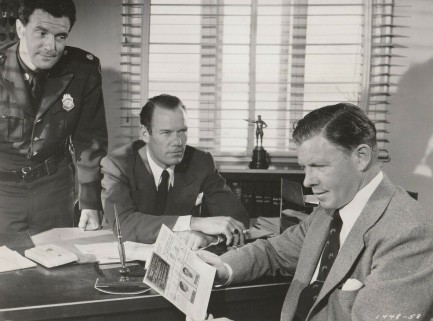
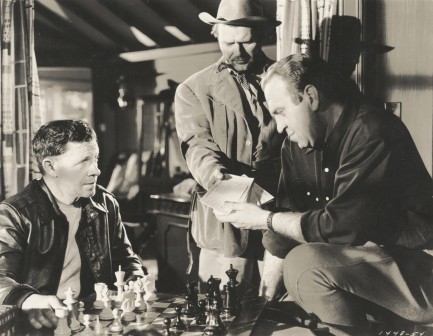
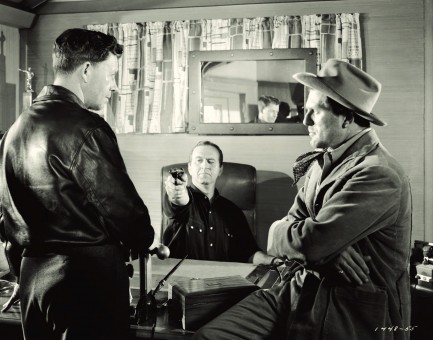
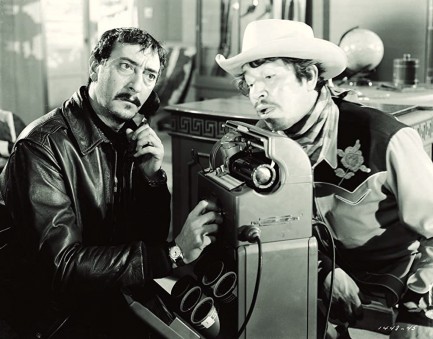
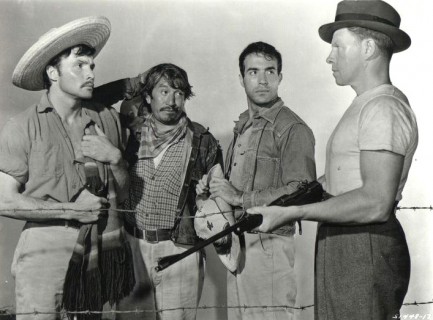
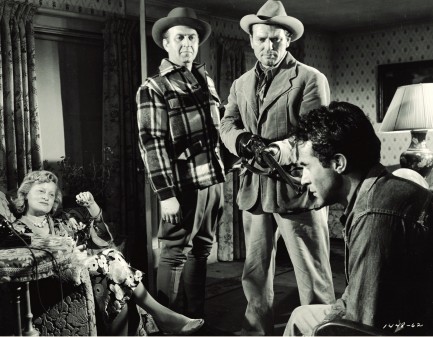
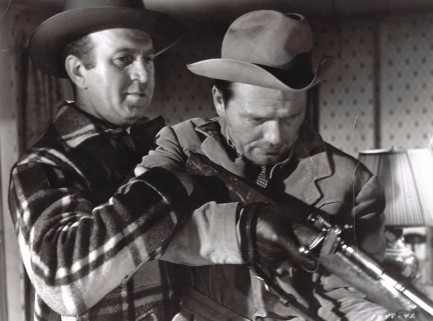
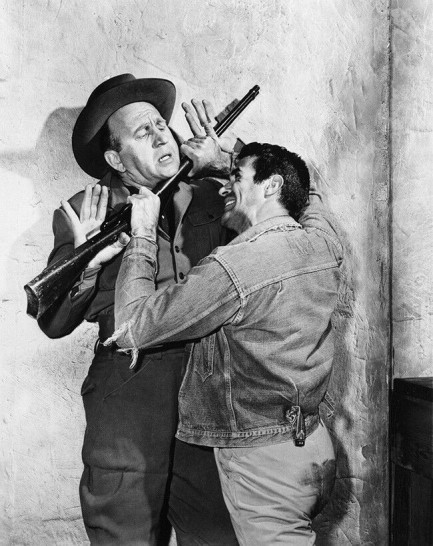
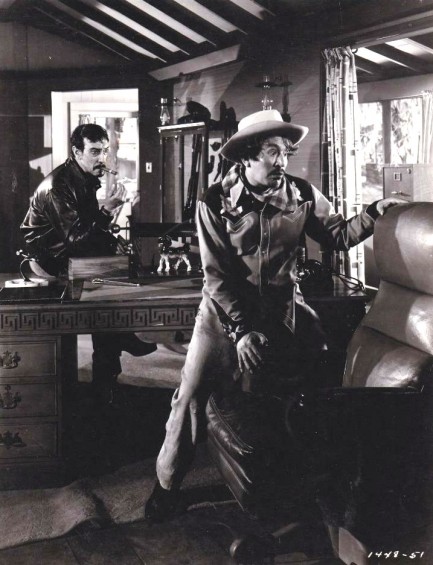
| Vintage Pulp | Apr 13 2022 |

The toughest case to solve is a case of amnesia.
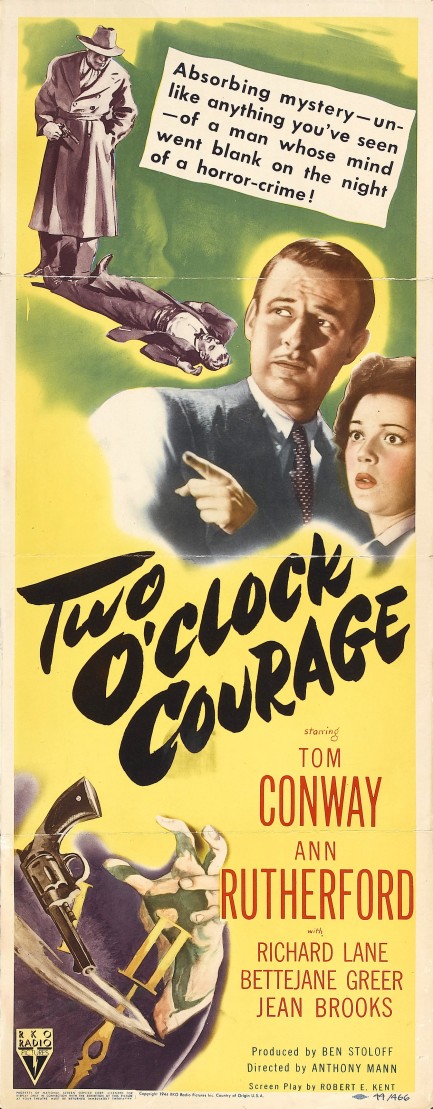
The poster above was made to promote the mystery Two O'Clock Courage, an interesting little noir-adjacent obscurity released today in 1945. It was directed by Anthony Mann of T-Men fame, and stars Tom Conway as a hapless everyman and Ann Rutherford as a cabbie who almost runs him over, but instead takes him under her wing. Conway needs help, you see, because he's been bonked over the head, and has no clue by whom or why. In fact, he doesn't remember anything before meeting Rutherford. Everything is a big fat blank. With his brain back to factory reset, he's a nice enough guy, but he soon learns that Rutherford found him near the scene of a murder. Did he have anything to do with it? He fears he might have. He and Rutherford pair up to sleuth their way to a solution, with cops and the press underfoot all the while.
The movie, while a mystery, also aims for laughs in the style of The Thin Man, with quips, wacky secondary characters, Bettejane Greer (Jane Greer) comically overacting the effects of alcohol, and an inspector who's entirely too willing to defer authority to nosy amateurs. Maybe it was uproarious in its day, but in our day it's a bit tedious. The problem is Conway's stumbling, stammering performance. A little more agency and competence would have played better, in our opinion. His all thumbs persona isn't a dealbreaker, though, thanks to Rutherford's presence. The two even manage to generate a few legit chuckles. As for the mystery, they're pretty bad as sleuths, but they eventually solve it, because with respect to cinematic amnesia you can always count on one thing—it's easy come, easy go.
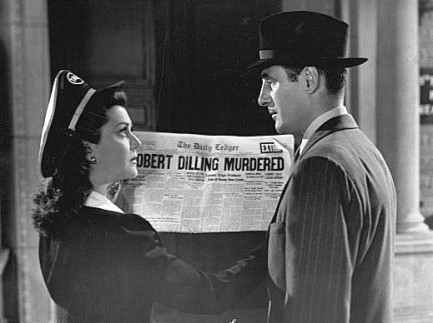 So you really have total and complete amnesia?
So you really have total and complete amnesia?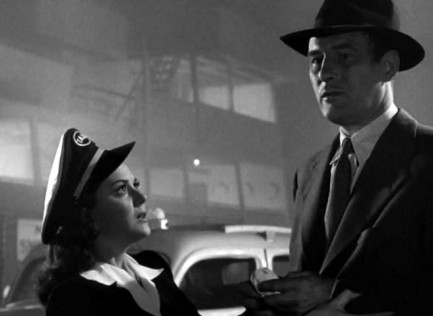 I guess you don't remember, but I've let you ride in my cab, like, hundreds of times and you owe me probably three grand. Cash only, please.
I guess you don't remember, but I've let you ride in my cab, like, hundreds of times and you owe me probably three grand. Cash only, please.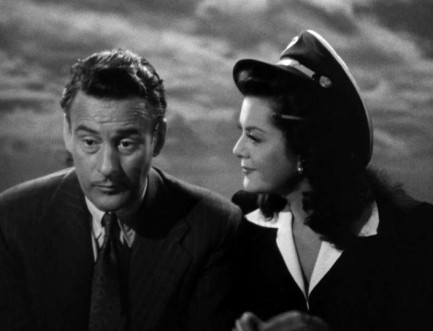 Oh, also we've had dozens of wild, carnal nights together. Since you forgot we better do all those again.
Oh, also we've had dozens of wild, carnal nights together. Since you forgot we better do all those again.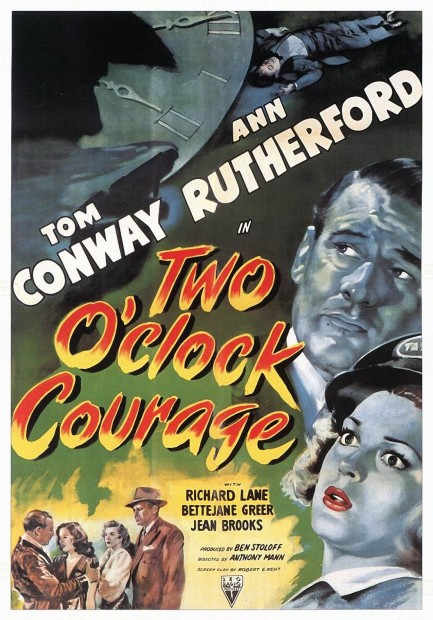
| Vintage Pulp | Dec 25 2021 |

T-Men shows Uncle Sam's money men hard at work keeping the greenback safe.
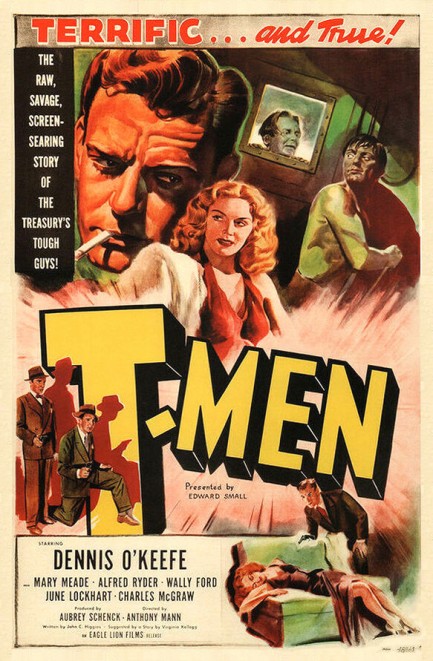
As you know by now, film noir derived from several sources, one of them being the hard-boiled pulp fiction of the 1930s and ’40s, such as the aforementioned Kiss Me, Deadly. As the cycle rolled onward, filmmakers routinely mined crime fiction for movies, and it became common for a book to be purchased for adaptation immediately after it was published. It was a heyday for crime authors. T-Men, for which you see a cool poster above and another at bottom, was not adapted from a novel. It came from a story idea by Virginia Kellogg, the unheralded brain behind films such as White Heat and Caged.
T-Men is the narrated tale of two treasury agents who infiltrate the Detroit mafia to stem a wave of counterfeiting. Dennis O'Keefe and Alfred Ryder play the duo of undercovers, looking sharp in their tailored suits, as they climb the mob chain of authority pretending to be in the possession of flawless counterfeiting plates they're willing to sell. The two take numerous risks to get close to the unknown head of the mob, and find themselves in hot water more than once. The question quickly becomes whether they can catch the crooks and stay alive.
You get excellent noir iconography here, courtesy of director Anthony Mann and cinematographer John Alton. In fact, though the movie is good anyway, the main reason to watch it is because it's a clinic in genre visuals, filled with beautiful shots where light and darkness intersect in sharp angles or blend like mist. The movie also makes good use of locations tailor-made for shadowplay—the steam room, the deserted street, the nighttime amusement park, the swank supper club, the gambling den, the photographer's darkroom, the industrial maze. If you didn't know better you'd think the filmmakers chose the locations first, then built a movie around them.
For those reasons, T-Men is a mandatory entry for film noir buffs, however it isn't quite perfect. Though there are many surprises, aspects of it related to survivability are predictable, and the narration nestles right up against pro-government propaganda, particularly toward the end. Generally, we think most vintage films could have done fine without narration, but here it's actually needed, so you'll have to ignore the filmmakers intent to teach the audience a lesson. That shouldn't be too hard—T-Men is an almost perfect noirscape, a place to get lost in darkness and enjoy the ride. It premiered in the U.S. today in 1947.
